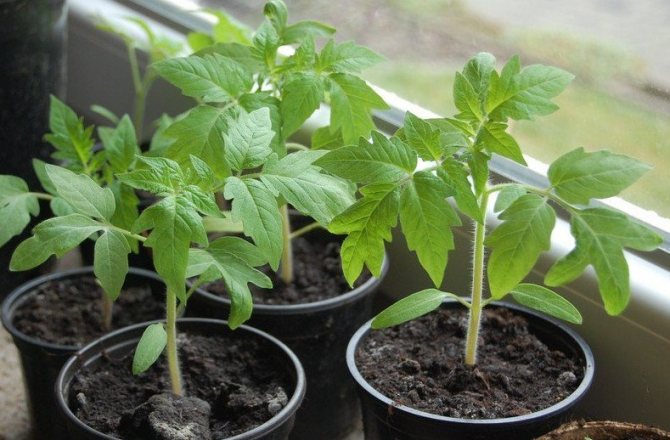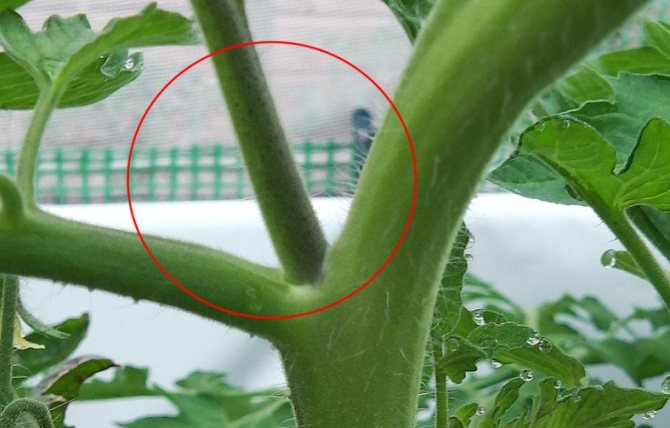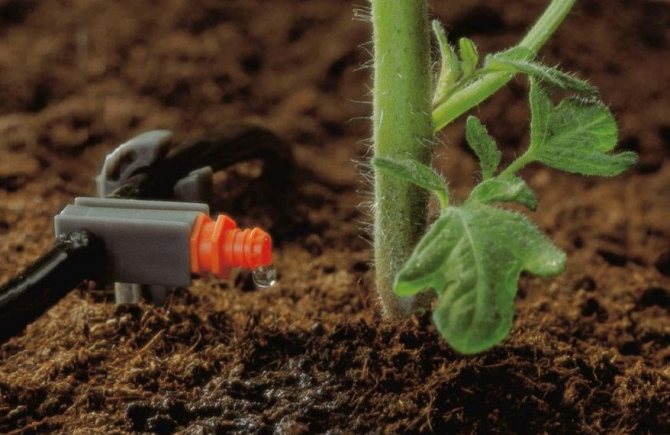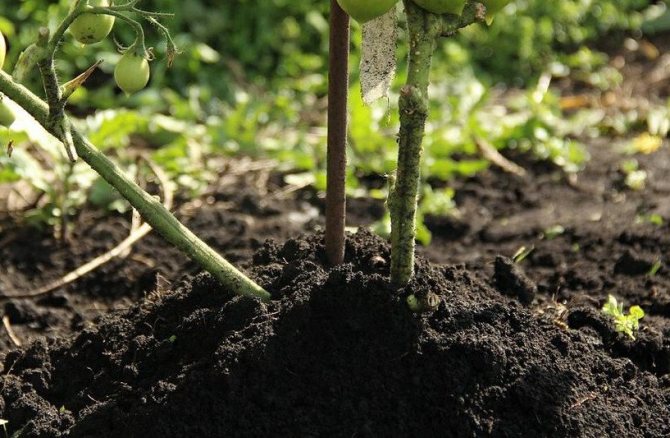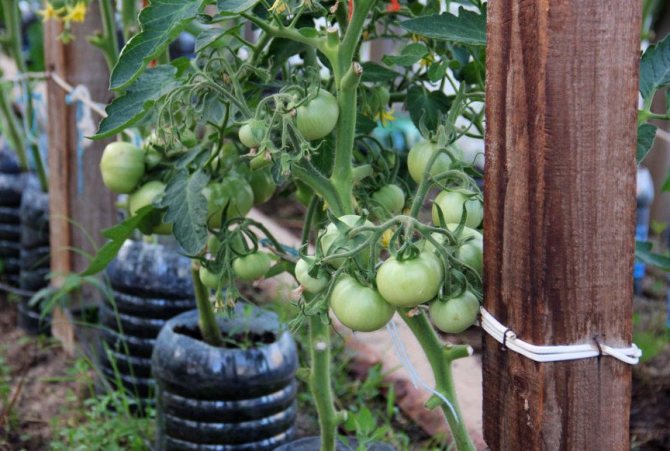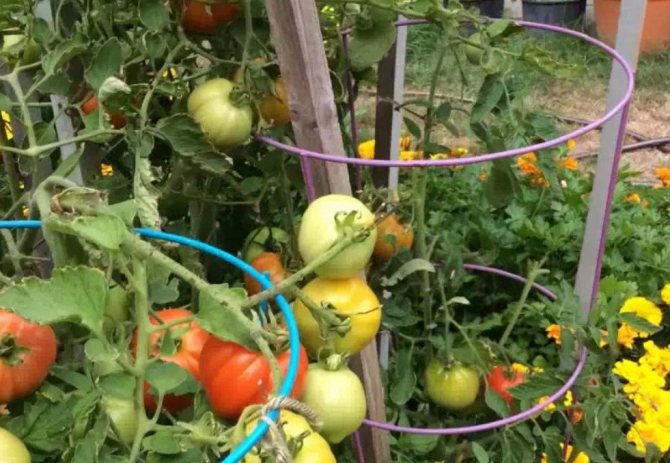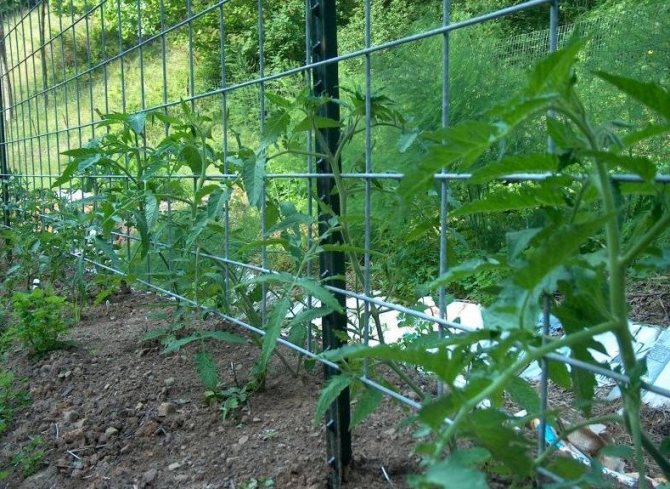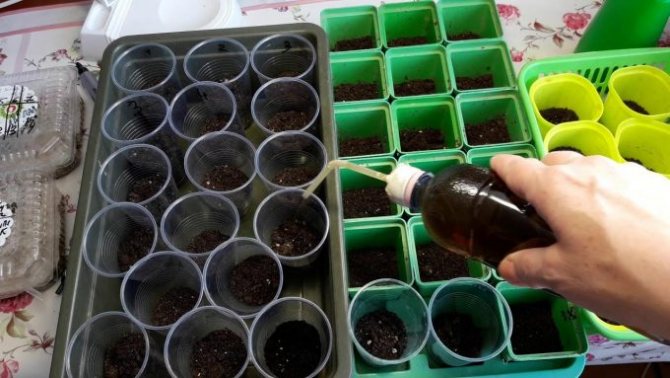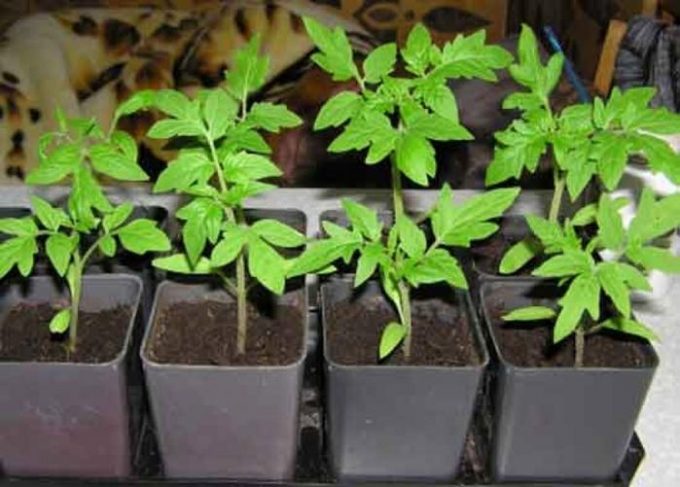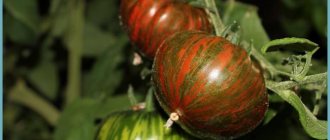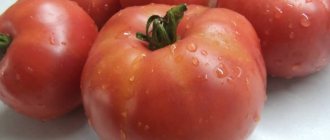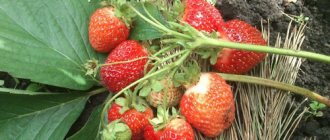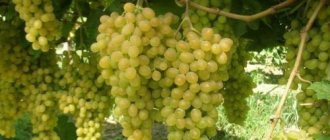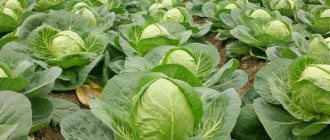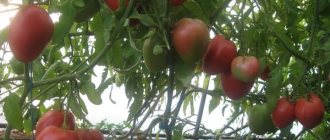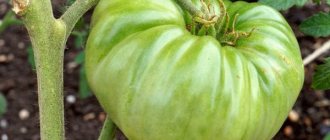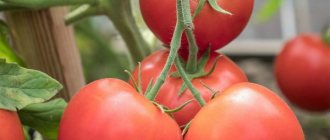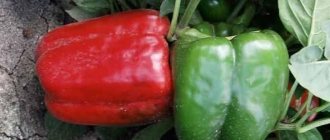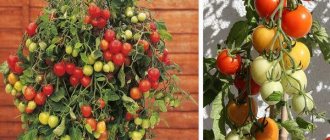Vegetable growing »Tomatoes
0
1430
Article rating
Tomato Olya was created by Russian breeders at the beginning of the XXI century. Thanks to the practical cultivation technique, Olya's tomatoes have won sympathy among vegetable growers. This variety is suitable for growing both outdoors and in greenhouse conditions.

Characteristics of the tomato variety Olga f1
Description and value of tomato Olya
Tomato Olya is a well-known tomato variety that has been successfully grown by many gardeners over the past 30 years. In the 90s of the last century, Olya's tomato passed a state test, according to the results of which it was approved for cultivation in many zones of the Russian Federation.
Tomatoes of this variety are considered unpretentious to care for. They are distinguished by good yield, frost resistance and strong immunity. Most often, gardeners grow Olya tomatoes in industrial greenhouses for further sale.
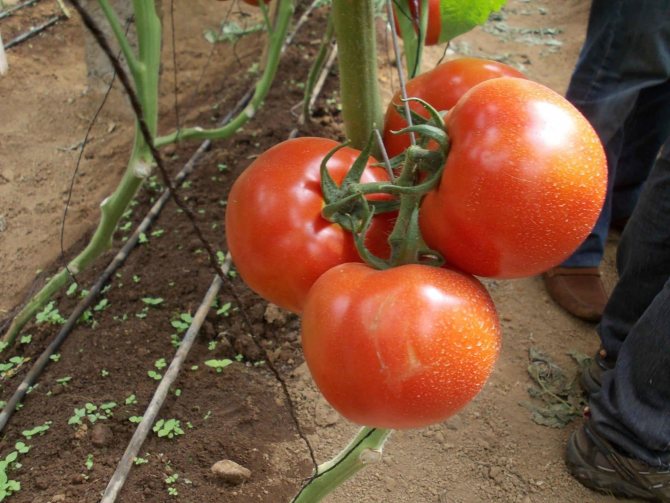

Tomato Olya
Tomatoes of this variety are considered medium-sized. They reach a height of 130 cm. Large leaves grow densely on the branches of the bushes. The branches themselves are branchy. Casting tomatoes are light green in color and feathery in shape.
Olya is an early ripening variety, its fruits ripen already on the hundredth day after the first shoots appear. For tomatoes, ripening of three brushes at once is characteristic, each of them grows up to 15 fruits.
When unripe, tomatoes are light green in color. During the ripening period, the color changes to bright red. The fruits themselves are round in shape, their diameter reaches 7 cm.The weight of tomatoes can be up to 150 g.
Important! The main feature of the variety is that ripe fruits on each bush have approximately the same shape and weight.
Methods for the formation of determinant tomatoes on video
If you have grown O la la tomatoes, please leave feedback about them and photos in the comments, this will help novice gardeners choose the best varieties of tomatoes for planting for the next season. Thank you!
This is a natural tomato variety. Therefore, we recommend taking seeds from a ripe fruit and using them for planting in the following seasons.
Buy tomato seeds Cornabel
Russia Gardens
Hit of the season 2020! A novelty that has shown a stunning result! High yield! Great fruit taste!
Variety characteristics
Olya tomatoes have a pleasant sweet and sour taste. These fruits can be used fresh or for winter spinning. Due to its good keeping quality, this variety of tomatoes can be grown for subsequent sale and transportation over long distances.
Tomato Olga, as this hybrid is sometimes called, is considered a high-yielding variety. With proper care of a plant culture from 1 sq. m. you can collect up to 30 kg of fruit.
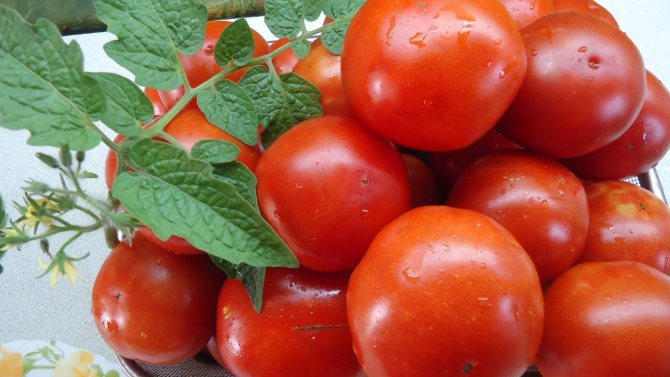

Ultra-ripe tomato variety Olga
Characteristics and description of the tomato variety Olya F1:
- full name - Olya F1;
- general description - early maturing hybrid;
- place of variety breeding - Russia;
- color - from light orange to bright red;
- fruit weight - up to 140 g;
- application - universal: salads, canning, pickling.
Tomatoes of this variety are distinguished by their fleshiness and dense structure.
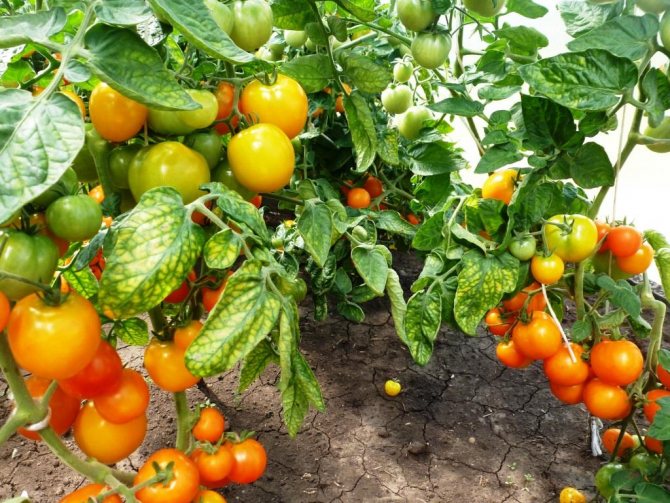

The fruits of the tomato variety Olya
Care features
The plant is distinguished by its high growth and several forms at the same time on the central stem.Tomato Olga f1 must be grown in 2 stems, while the second stepson is released from the first brush. On the central shoot, remove all flowers and the upper part. Places of cuts are sprinkled with charcoal.
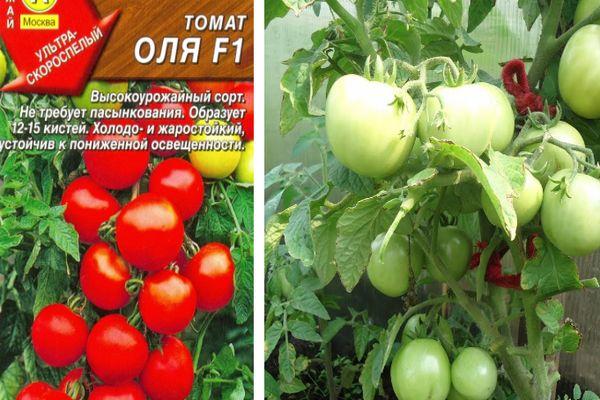

Care has no specific features and consists in timely watering, weeding and removal of weeds. During the growing season, it is necessary to feed the plant with mineral complexes in the form of phosphorus and potassium fertilizers.
You should not use a large amount of nitrogenous means, as overfed plants will form a large amount of greenery and there will not be enough nutrients for the formation of fruits.
Advantages and Disadvantages Compared to Similar Tomatoes
An early ripe hybrid is similar in its properties to other tomatoes. However, it has some superiority over them:
- high yield rates;
- possibility of transportation over long distances;
- resistance to high and low temperatures;
- good immune performance;
- resistance to lack of sunlight;
- good presentation.
According to gardeners, there is only one drawback for the fruits of Olya tomatoes - the need for regular tying of the bushes, as well as the establishment of a solid support for them.
Disease and pests
Olya tomatoes are resistant to many seasonal diseases and pests. However, in the absence of nutrients, they may develop brown spot or late blight. As a prophylaxis of these pathologies, regular loosening of the soil and timely watering are used.
During the growing season, tomatoes often infect fungal infections. Most often, they develop against the background of high humidity and rotting of the root system. To get rid of the fungus, a solution of copper sulfate is used.
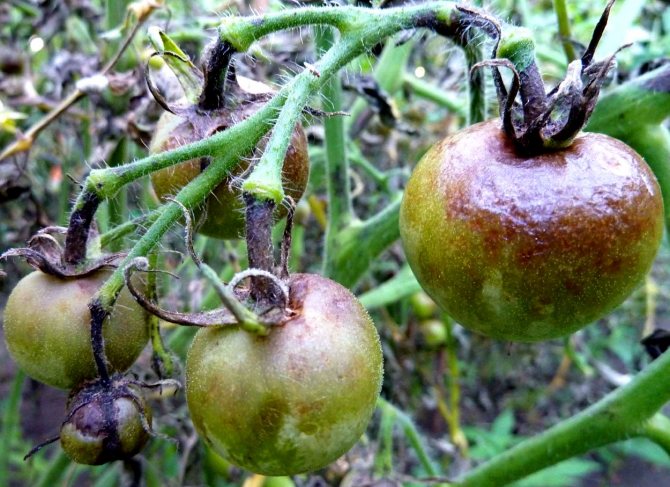

Late blight on tomatoes
If home methods do not help to cope with diseases, it is recommended to use fungicides. For example, the Barrier drug is often used in such cases. It is diluted in a ratio of 10 g per 10 liters of liquid. The resulting solution is sprayed with damaged bushes.
From pests, tomatoes can be attacked by a bear. You can scare her off with a strong smell. To do this, many gardeners bury finely chopped garlic in the ground.
Aphids and spider mites sometimes do appear on tomato shoots. First, you can fight them with folk remedies. If the pest attack is widespread, it is best to purchase a systemic insecticide from the store.
Harvesting
Tomatoes that grow in greenhouse conditions can be harvested as early as mid-May. Outdoors, ripe fruits appear on the branches only in June. Harvesting is recommended in the first half of the day, before the tomatoes are strongly heated by the sun. Unripe fruits must also be harvested. This tomato variety tends to ripen in artificial conditions. The advantage of Olya tomatoes is that they can be used for long-term storage and transportation over long distances.
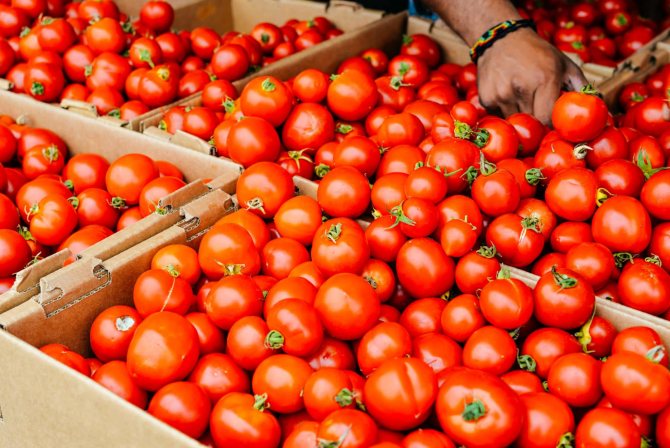

Hybrid tomato varieties can please with a good harvest
Important! In order for the crop not to lose its presentation, certain storage conditions must be observed.
After harvesting, all the fruits will need to be laid out under a canopy on covered bags and carefully sorted out. Those that have begun to deteriorate are best thrown away. They can cause spoilage of healthy tomatoes. After that, ripe fruits are laid out in wooden boxes and sent to the basement. It is recommended to store tomatoes at temperatures from +5 to +13 degrees Celsius.
Olya tomatoes are an ultra-early ripening plant that is easy to care for. The variety shows good yields and does not require special growing conditions. Hybrid tomatoes tolerate temperature extremes, frost and strong winds well, but they categorically do not like high humidity.In order to prevent infection of plants, it is necessary to monitor the timeliness of watering and feeding.
Self-cultivation of seedlings
Tomato variety Olya is suitable for indoor and outdoor cultivation. The yield directly depends on the growing conditions. They begin to prepare the soil in advance, immediately after harvesting on the site.
Did you know? The smallest tomato in the world weighs 10 g, and the largest weighs 1.5 kg.
Sowing seeds is carried out after assessing the characteristics of the climate of the region. It should also be borne in mind that from the moment of sowing the seeds to the formation of a full-fledged seedling capable of transferring the pick and acclimatization in a new place, it will take 2–4 weeks.
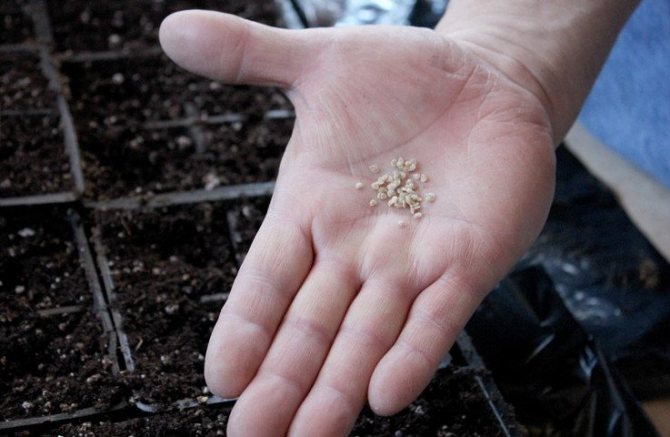

Optimal timing for sowing
Sowing seeds is carried out in mid-March. In this case, by mid-May, the seedlings will be ready for transplanting into open ground.
Find out why tomatoes do not turn red in the greenhouse.
The soil
The variety grows well on loose, moisture-permeable soils. Particular attention should be paid to the presence of mineral and organic substances. At the site for planting in the fall, you need to remove the remnants of the crop, roots and tops of weeds. Then apply organic fertilizers. You can use cow dung - 10 kg per 1 sq. m. After that, the site is dug to a depth of 20 cm.
For planting seedlings, it is necessary to prepare an earth mixture, consisting of:
- 1 part peat;
- 1 part sawdust;
- 2 parts of fertile soil.
Wood sawdust must be steamed in boiling water. After cooling, add 1 tbsp. l. urea.
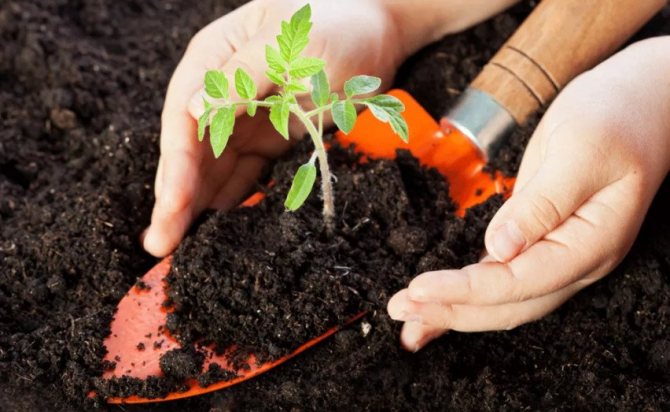

For 10 kg of soil mixture add:
- 100 g of crushed eggshells, pre-fried in the oven at a temperature of +60 ℃;
- 500 g of wood ash;
- 2 tbsp. l. superphosphate.
After thorough mixing, 1 liter of hot 1% potassium permanganate solution is added to the soil. This technique will ensure soil disinfection. The cooled soil mixture is laid out in containers for germination.
Did you know? For a long time in the territory of modern Russia, tomatoes were considered inedible and were bred in private lands, as ornamental plants. They began to be eaten only in the 19th century.
Growing tank
For sowing seeds, you can use:
- Special boxes - the method is not very convenient, since after the emergence of seedlings, you will have to transplant the seedlings into different containers, which is not always well tolerated by the seedlings.
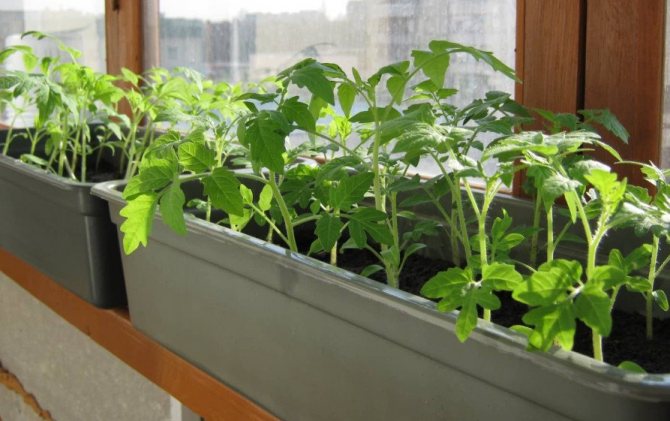

- Separate plastic cups - in this case, the transplant is carried out once into the prepared soil by the transshipment method.
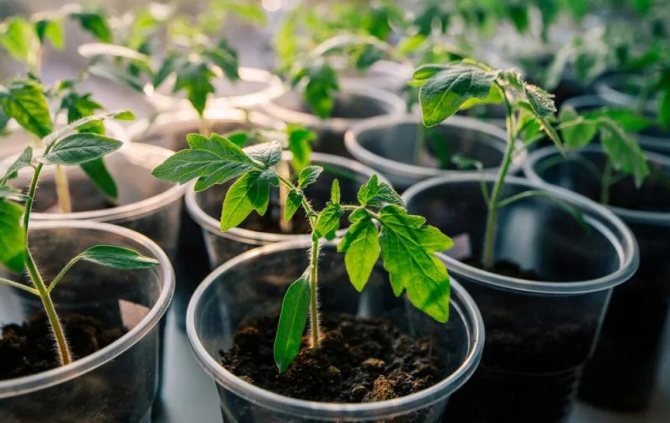

- Peat cups or pots - when transplanting, you can place seedlings in the soil directly in these containers, they quickly decompose on contact with the soil, ensuring its enrichment. The only drawback is the need to carefully monitor the soil moisture, since water in such containers evaporates much faster.
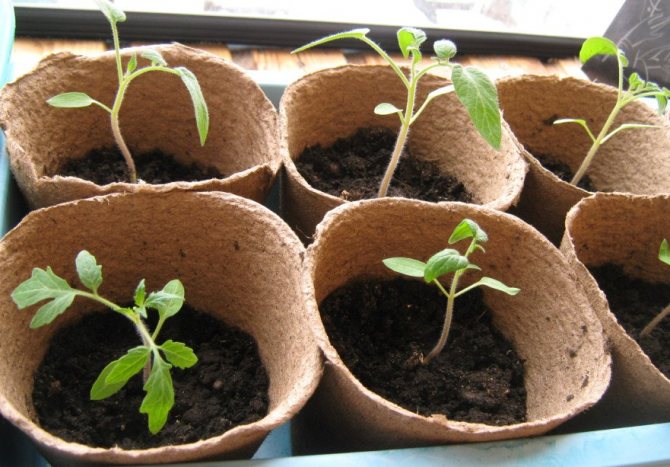

Seed preparation
The next step is to prepare the seed. First you need to reject empty seeds. To do this, dissolve 1 tsp in 200 ml of warm water. salt. Instead of saline, you can use a 1% manganese solution. All the seed is placed in liquid and left for 20 minutes. The floating seeds are thrown away, and those that have sunk to the bottom are washed with running water and dried on a paper towel.
It will be useful for you to find out the best recipes for sauerkraut at home.
Before sowing, a germination procedure is carried out. To do this, a layer of moistened gauze is placed on a plate and the seeds are placed on it in one layer. The water should lightly cover the seed. In this form, the seeds are left for 12-18 hours at a temperature of + 20-25 ℃.
Sowing seeds
When sowing, the soil is pre-moistened. In common boxes, small furrows are made at a distance of 5 cm, 1 cm deep. The seeds are placed in the furrows at a distance of 5 cm from each other and sprinkled with soil on top. With separate containers, everything is easier.Place 1-2 seeds in the central part and sprinkle them with soil.
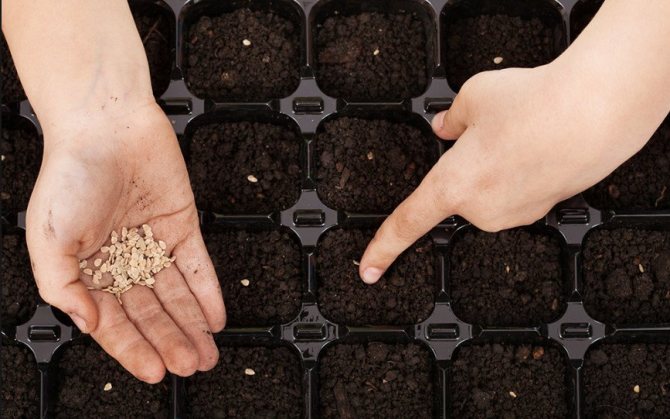

The containers are covered with foil or glass to ensure the greenhouse effect. Humidification is carried out on demand. Every day for 20-30 minutes the film or glass is removed to ventilate the soil. Before the first shoots appear, the containers are kept in a darkened room at a temperature of + 20-25 ℃.
Find out what to do when there are white spots on tomatoes in the greenhouse.
Seedling care
As soon as the first shoots appear, the cover is removed. Containers with seedlings are installed in a well-lit room, near the southeastern windows, but not in direct sunlight. Watering begins on the 4th day from the moment the shoots appear, making 2 tsp. water on each plant, distributing it along the edge. With the appearance of 3 full-fledged leaves, the water rate is increased to 100 ml per seedling.
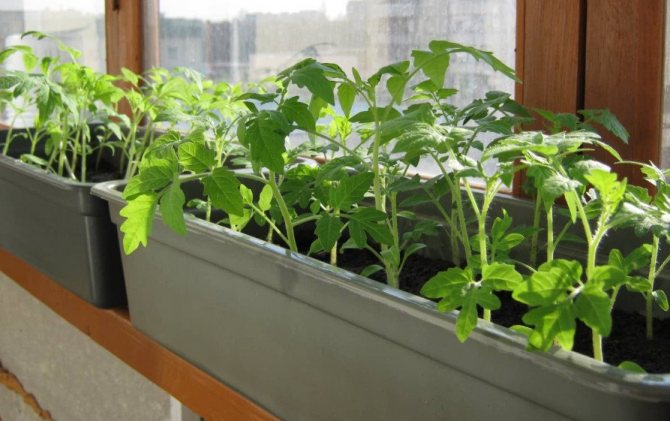

When growing in a common box, diving is carried out 2 times:
- after the appearance of 3 full-fledged sheet plates;
- 3 weeks after the first pick.
7 days after the sprouts appear, they are treated with Epin's solution, following the instructions.
Tomatoes can be fertilized with yeast.
1.5 weeks after the first pick, the seedlings are fertilized with nitrogenous fertilizers. This will allow the plants to develop a strong green mass. For plants that initially grow one by one, pinch the growing point 2 times at the same time for picking.
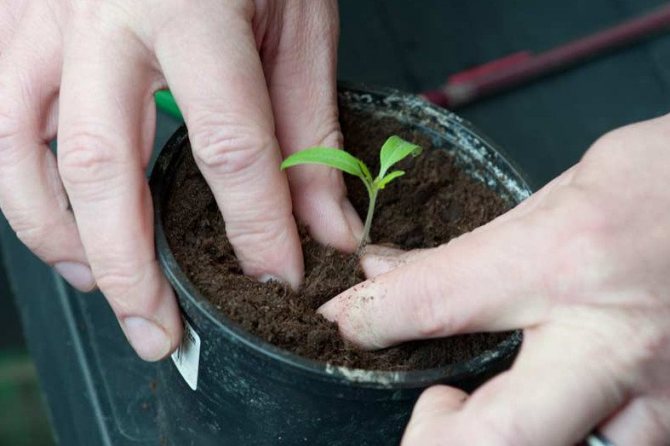

Hardening of seedlings
Provided that the seeds were planted in mid-March, already from April 15, you can begin to carry out hardening procedures for seedlings and plant them in the ground after about a month.
Important! Hardening is a procedure that allows you to increase the adaptive abilities of plants and their immunity. Each pick and change of place is stressful for the entire plant organism. If you do not harden, then during adaptation to new conditions, plants can significantly slow down their growth and become sick or die.
Seedlings begin to be displayed on a glassed-in balcony from 9 am on sunny days for 30-40 minutes. For 3-4 days, the time is increased by 1 hour. It is important to ensure that the air temperature does not drop to + 10–11 ℃. From the 5th day, they begin to open the window and leave the plants to take air baths for 1 hour. Each day, the time is increased by 30-60 minutes, depending on the reaction of the plant. The last 24 hours before planting, the seedlings should already be carried out in the fresh air around the clock.
